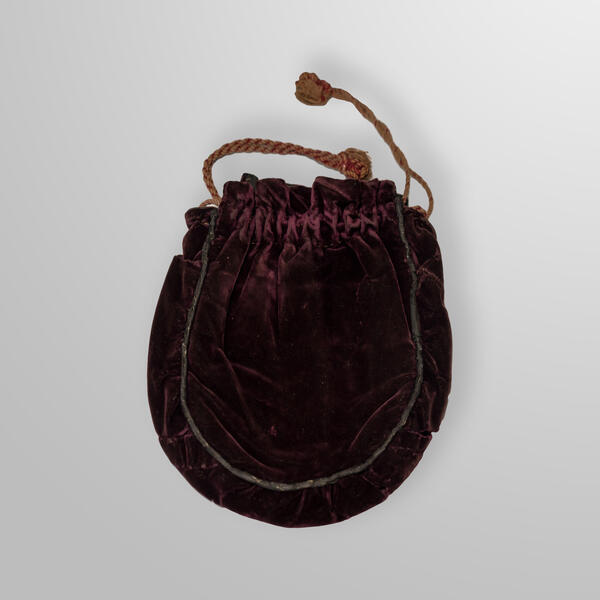A reticule or ridicule (from the French “ridicule” meaning “funny” and the Latin “reticulum” meaning “net”) was a type of purse that became an essential women’s accessory in the 18th century.
As long as voluminous layered dresses were in fashion, deep pockets and small handbags could be successfully hidden in their folds or hung from the waistband. It was considered indecent for a woman to carry something in her hands or to reveal where she kept her personal accessories such as makeup products, handkerchiefs, and other items.
In the 1790s, the luxurious Rococo was replaced by the Empire. The new style was characterized by light dresses without corsets, with a high waist, and a narrow and straight silhouette. It was impossible to hide even small items under such clothes.
It is believed that drawstring bags made of woven material and worn on the wrist were popularized by Madame de Pompadour, the court favorite of Louis XV. Initially, such “pompadour” handbags were intended for needlework which young girls and women brought everywhere, including social events. Apart from thread and needles, reticules were also used to carry perfume, rouge, smelling salts, playing cards, notebooks, and other small items. Larger and heavier possessions were carried by the lady’s servants.
The reticule could have also been inspired by a men’s wallet known as an aumônière. It appeared as early as the 13th — 15th centuries. As a rule, aumônières were made of deer, horse, ox, or sheep skin. Sometimes, such wallets were decorated with wool and hung on a leather belt with a metal frame for safety purposes. Initially, the wallets were worn on the belt and hidden under the clothes to avoid attracting the attention of thieves. However, they gradually developed into a fashion accessory and an indicator of the owner’s status. As a result, they began to be decorated more luxuriously and were worn not only on the belt but also around the neck.
As a lady’s reticule accompanied the dress, it was often sewn from the same fabric such as velvet, muslin, or satin, and decorated with embroidery, lace, braid, beads, or bugles.
Often women sewed their own reticules. In this case, a handbag became an indicator of not only the owner’s status but also her taste and talent.
In the 1820s, lavish dresses came back in style, but reticules had already become an essential accessory and continued to enjoy popularity until the 20th century.
The displayed bag entered the museum’s collection
in 1978.





